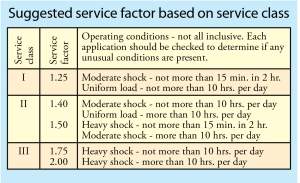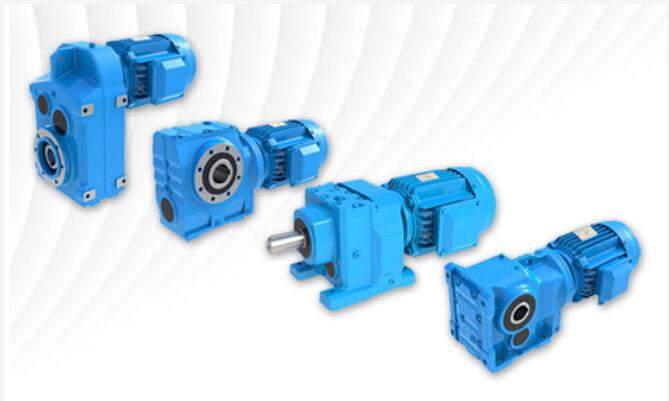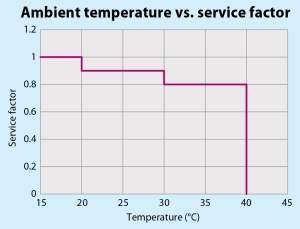Basic Selection of Gearbox Reducer
Gearbox reducer selection can be quite difficult. Customers have a variety of gearbox reducers to choose from that are capable of fulfilling diverse requirements. A wrong decision could result in the purchase of a more expensive gearbox. The power transmission industry may need a gearbox that will support overhung loads while the motion control or servo industry may need a gearbox that will handle dynamic motion.
Einer der ersten Problembereiche für die Größe von Größen bis zum Motor und der Größe der Last. Die Größe des Motors ist möglicherweise einfacher und führt zu einem Getriebe, das funktioniert. Dies führt jedoch zum Kauf eines größeren Getriebes als benötigt. Dieses Getriebe wird auch für die Anwendung überqualifiziert. Die Größe der Last sorgt jedoch für ein Getriebe für die Anwendung und ist sowohl kostengünstiger als auch potenziell ein kleinerer Fußabdruck.
Common Aspects of Sizing Applications
Es gibt verschiedene Aspekte der Getriebegrößen, die für jede Situation gelten. In diesem Abschnitt werden diese Kriterien detailliert detailliert und bieten Einblicke.
1. Servicefaktor

Service factor can be generally defined as an application’s required value over the rated value of the unit. Service factor should be determined for conditions such as non-uniform load, hours of service, and elevated ambient temperature.
How would one interpret a service factor? A service factor of 1.0 means a unit has just enough capacity to handle the application. There is no tolerance for additional requirements, which could cause the gearbox to overheat or fail. For most industrial applications, a service factor of 1.4 is adequate. This service factor signifies that the gearbox can handle 1.4 times the application requirement. If the application requires 1,000 inch-pounds, the gearbox would be sized to handle 1,400 inch-pounds. Different factors will affect how much service factor should be used in a given application.
2. Umgebungstemperatur und Umgebung
Higher ambient temperatures increase internal pressure, which will require an increase to the service factor used. High or low temperatures can require different seal materials and lubrication viscosities. The environment the gearbox will operate in is also an important consideration for sizing. Harsh environments can increase wear on the unit. Dusty or dirty environments often require special material to prevent corrosion or bacteria growth. Food or beverage plants require specific FDA compliant coatings and oil. Vacuum environments will require special grease and heat dissipation considerations, since there will be no air for cooling. Failure to account for these environmental features can result in a gearbox that cannot support the application properly. All of these aspects must be considered when sizing a gearbox.
3. Schocklast oder Art der Last
Hohe Stoßdämpfer oder Aufpralllasten können zu einem erhöhten Verschleiß der Zahnradzähne und den Wellenlagern führen. Dieser Verschleiß kann vorzeitig ausfallen, wenn sie bei der Größe nicht berücksichtigt werden. Diese Lasten erfordern einen erhöhten Servicefaktor. Einheitliche Belastungen sind Lasten, die während der Anwendung konstant bleiben, während sich die ungleichmäßigen Lasten während der Anwendung ändern. Uneinheitliche Lasten erfordern, auch wenn es klein ist, einen höheren Servicefaktor als einheitliche Lasten. Ein Beispiel für eine einheitliche Last wäre ein Förderer mit einer konsistenten Produktmenge, die darauf fährt. Eine ungleichmäßige Belastung wäre jede Art von intermittierender Schneidanwendung. Diese intermittierende Schneidkraft führt zu einem regelmäßigen Anstieg des Drehmoments am Getriebe, was eine ungleichmäßige Belastung ist.
4. Ausgangsstil oder Mechanismus
Zu den Ausgangsmechanismen gehören ein Kettenrad, eine Riemenscheibe oder ein Zahnritzel, um nur einige zu nennen. Unterschiedliche Ausgangskonfigurationen, wie z. B. Doppelausgangswelle oder Wellenbranche, verringern, für die das Gerät bewertet wird. Unterschiedliche Ausgangsmechanismen fügen unterschiedliche Wellenlasten hinzu, die berücksichtigt werden müssen. Die meisten Mechanismen verursachen eine hohe radiale Belastung, aber Dinge wie Helical Getriebe können auch eine axiale Belastung verursachen. Diese Ausgänge könnten unterschiedliche Lager erfordern, um die erhöhte radiale oder axiale Belastung zu berücksichtigen.
5. Ausgangswelle oder Hohlbohrung Größe
When sizing an application, the output shaft and bore size must meet customer requirements. These could include a stainless output on the unit, and whether it has a keyed or keyless shaft, a keyed or keyless hollow bore, or a flanged output combined with any of the previous. Getting the correct bore size on a unit may force the customer to purchase a larger gearbox or a different style of gearbox to fit their current shaft. In some instances, the customer can modify their shaft to use the most cost-effective unit while providing an optimal solution.
6. Wohnstile
It is also important when selecting a gearbox to consider how it will mount. A unit could have mounting feet, a flange on the output, or just basic tapped holes on one or more sides. These housing styles could limit how a unit is mounted so having a variety of options could prevent custom frames or brackets from being needed. For example, having tapped holes on the bottom face of the unit would prevent the need for a special L-bracket to mount around the output.
Power Transmission
Some elements that affect the sizing process are industry specific. For the power transmission industry, output RPM, motor horsepower and frame size, and overhung load all impact the application calculations.
• Ausgabe -Drehzahl The customer must determine the ratio needed for the gearbox reducer to operate, or provide input/output speed and operating hertz (Hz) for calculations. The standard is a 1750 input RPM at 60 Hz. Any changes will need to be specified when sizing as it will change the ratio calculation. Failure to account for changes will result in a gearbox that does not match the customer’s requirement.
• Motor HP and Frame Size The gearbox reducer size and input option must be determined before calculating the service factor. Once the gearbox is sized, use the required HP to compute the actual service factor. Large HP motors generate heat that can adversely affect the reducer’s mechanical ratings. This reduced rating, based on the increased heat, is known as the Thermal Capacity of a reducer, and must be considered when using large motors.
• General Shaft Load Die Größe muss überprüfen, ob die Ladung das Getriebe nicht schädigt. Die in Pfund gemessene Kraft, dass die Ausgangswelle in der Lage ist, aufrechtzuerhalten, wird als übergeordnete Lastbewertung bezeichnet. Wenn die Bewertung geringer ist als die Anwendung, wird der Geschwindigkeitsreduzierer beschädigt.
Motion Control
Für die Servoindustrie beeinflussen die Eingangsgeschwindigkeit, die Trägheit, die dynamische Drehmomentbewegung, die spezifischen Wellenlasten und der Motorwellendurchmesser den Größenprozess.
• Input Speed Input speed should not exceed the gearbox ratings or premature seal wear will occur due to increased pressure. Input speed can be accidently increased if there is an output mechanism with a ratio that is not considered when sizing, which is another reason why specifying any output mechanisms is so important.
• Inertia An inertia mismatch of less than 10:1 is desired for fine controlling of the output. This is important to obtain the high accuracy needed for some applications. Reducer size and ratio are main influences from the gearbox on inertia. Control engineers may request smaller mismatches or even specific amounts. Often a motor is chosen for its dynamic capabilities, not for its torque. It is common to use a motor with much more torque than needed for the application due to its increased rotor inertia. Some motor manufacturers even make motors specifically for high or low inertia ratings. This allows for better tuning of the application because of a lower inertia mismatch. When doing this, it is important to limit the output torque in the motor to prevent breaking the gearbox
• Dynamic Motion Cyclic motion may require using a higher service factor than continuous motion. This is because constant starts and stops cause additional wear on the gear teeth and seals. Cyclic reversing, which is constant back and forth motion between two points, requires an even higher service factor than cyclic or continuous
• Specific Shaft Loads Radiale, axiale und Momentwellenlasten müssen gegen die Bewertungen des Geräts überprüft werden. Ein Versäumnis, dies zu tun, kann zu einer gebrochenen Welle oder einer Schädigung der Lager oder der Zahnradzähne führen. Im Allgemeinen wird der gleiche Servicefaktor auf diese Bewertungen angewendet, um ein angemessen starkes Getriebe zu bestimmen. Zusätzliche Lagertypen können diese Bewertungen erhöhen, wenn die Anwendung sie benötigt.
• Motor Shaft Diameter or Length Die Motorwelle muss in das Gerät passen, und die Welle muss lang genug sein, um sich mit der Kupplung zu engagieren. Ohne volles Engagement könnte ein Eingabestand auftreten. Dies wirkt sich zwar nicht auf den benötigten Servicefaktor aus, aber es ist wichtig zu berücksichtigen, um Probleme zu vermeiden, die den Motor montieren. Einige Hersteller haben ein großes Input -Design, mit dem der Reduzierer den größeren Motor aufnehmen kann, ohne die Einheitsgröße zu erhöhen.
Conclusion
To achieve the best gearbox reducer solution, customers should size from the load. This will ensure they receive cost effective solution that fits the application. The service factor, environment, ambient temperatures, shock load, output style, and hours of service are all important aspects for sizing. The more information the customer provides, the more accurate the sizing process. This will ultimately yield a solution that matches the customer’s requirements! There are numerous sizing programs available that can help determine what gearbox is most appropriate for your application.






